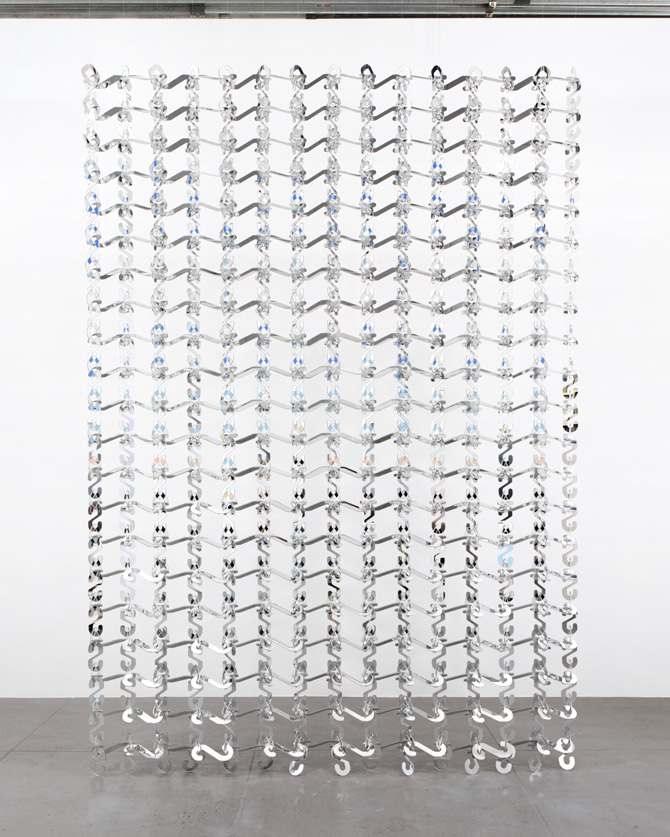
Ghost Pearls explores how we connect across space and time. The work is based on research into lace, early digital art, and contemporary virtual space.
The sculpture is made from ~1000 pieces of individually-cut mirror woven into lace.
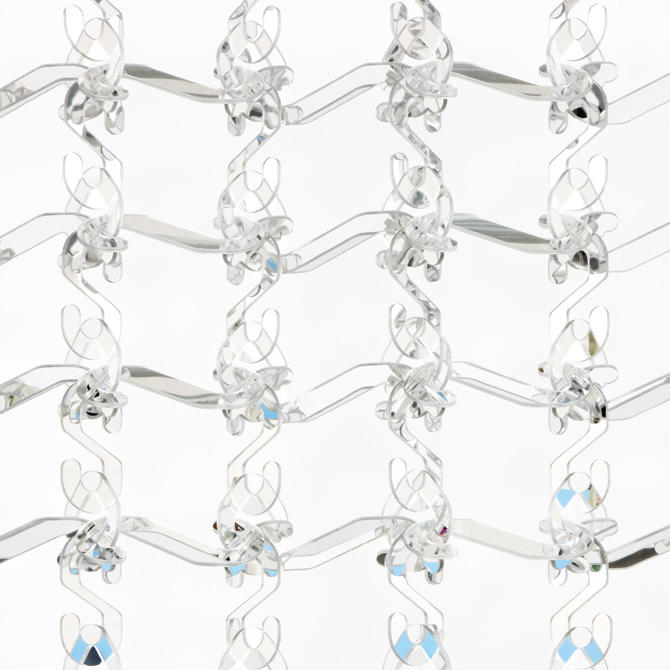
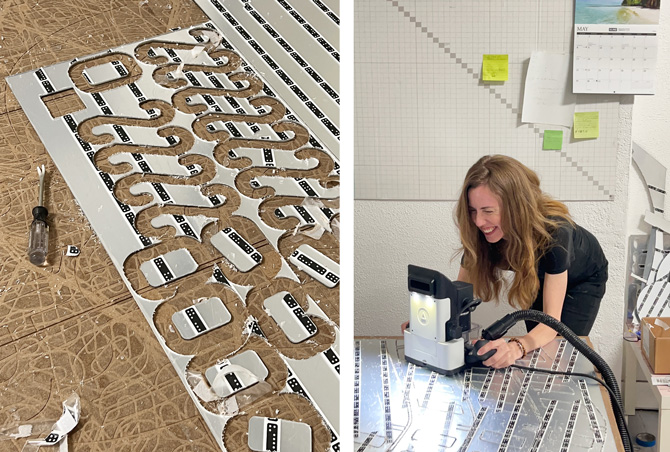
Lace links time with value. It takes thoughtful attention over long periods of time to construct handmade lace. Time and attention become encoded—this is part of what has made hand-crafted lace valuable.
I cut the work in my studio with a hand-held CNC. It’s a way of amplifying my hand with a machine, melding physical and digital worlds into a single weaving.
Ghost Pearls was inspired by a dream of lace. In the dream I saw a tall, flowing piece of lace hovering in the air. It was a simple design, yet intricate, different than anything I’d seen. It somehow represented my past, present, and future, and in that peculiar way of dreams, was a form of service. As I saw it, a feeling of joy and calm washed over me.
After the dream I began to research lace.
Lace evolved from netting—the practice of making nets. From the Renaissance to the 18th century, lace was as costly as gold or jewels, and passed down for generations as a store of wealth.
Lace is an open, web-like pattern. Like other forms of weaving, it can be seen as a precursor to early computing.
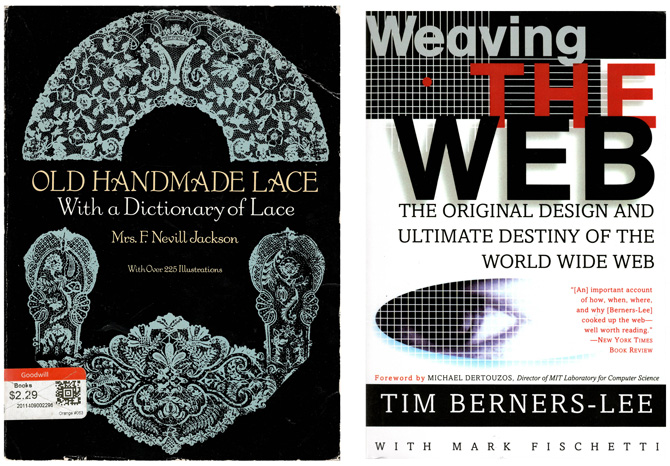
Ghost Pearls weaves together these many references—and, like a dream, creates space for reflection.
To translate lace into sculpture, I simplified it to an essence—a binary—a loop and a hook. The long vertical chains of Ghost Pearls are made of these loops and hooks woven together, joined horizontally by longer hooks.
The shapes of these parts evoke language, code, and play.
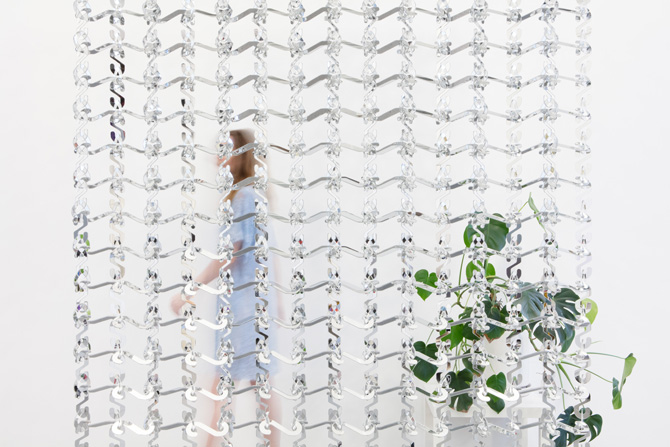
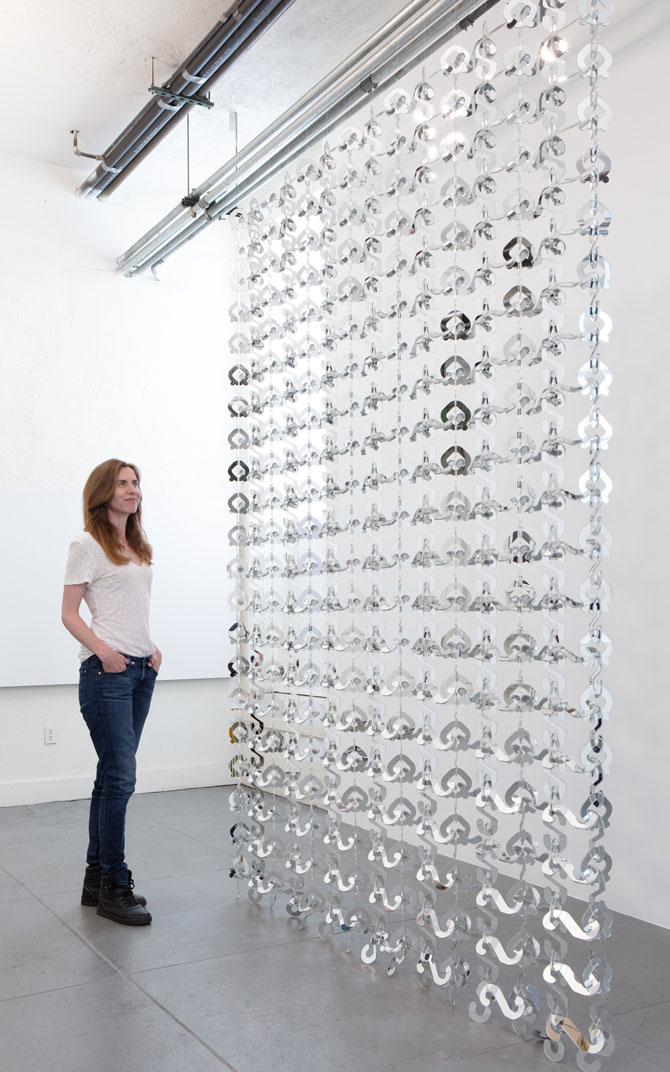
Traditional mirrors reflect our image directly back. Ghost Pearls is a completely different experience.
Here the angled mirror fabric reflects the entire environment at once. From ceiling to floor, the whole interior mixes and morphs together in looping threads as you move around it.
Mirror becomes a rippling wave—an invitation to weave, and to be woven.
- Made possible with the support of Granary Arts.
- With additional thanks to Amy Jorgenson, Kamilla Earlywine, Bryn Burningham, Elisabeth Fitch, and Ty Foster.